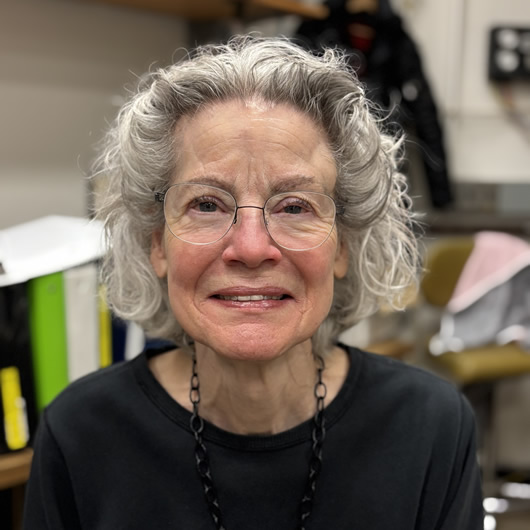
The sense organ for hearing, the organ of Corti, is located in the cochlea and contains the sensory hair cells that convert mechanical inputs into electrical signals appropriate for delivery to the brain. Over the years we have utilized various methods to understand cochlear function beginning by measuring gross potentials from the cochlear fluids and later recording from individual hair cells in vivo and in vitro. We now perform measurements of auditory brainstem responses (ABR) and otoacoustic emissions (OAE) in our efforts to screen various animal models. These are the same noninvasive tools used clinically in human subjects. By defining both anatomical and physiological changes, we hope to gather information that may explain the hearing loss associated with various genetic mutations and disease states identified in humans.
Given that mice and humans carry several homologous genes for hereditary deafness, mice provide an important animal model for studying hearing loss of genetic origin, which affects at least 1 in 2000 births. For example, transgenic animals were advantageous when investigating the functional significance of the outer hair cell (OHC) motor protein, prestin, the molecular basis for OHC electromotility. This voltage-dependent change in cell length is essential for sensitivity and frequency selectivity, the hallmarks of mammalian hearing. The additional fact that we are part of a much larger research institution that prioritizes neuroscience, and sensory physiology, makes for a productive working environment, as does my position within the Department of Communication Sciences and Disorders where translation to clinical practice is a potential outcome. This latter association, along with our collaborations with investigators at the Feinberg School of Medicine, provides an opportunity for dialogue with those studying the mechanisms underlying hearing loss, and its amelioration across several dimensions.
Education
- PhD, Audiology, Northwestern University
- MA, Audiology, Northwestern University
- BA, Speech Pathology and Audiology, University of Kansas
Recent Publications
Cheatham MA (2023). Distortion product otoacoustic emissions in mice above and below the eliciting primaries. JARO 24: 413-428.
García-Añoveros J, Clancy JC, Zhi Foo C, García-Gómez I, Zhou Y, Homma K, Cheatham MA and Duggan A (2022). Tbx2 is a master regulator of inner vs outer hair cell differentiation and maintenance. Nature 605:298-303.
Homma K, Takahashi S, Cheatham MA (2021). How much prestin motor activity is required for normal hearing? Hear Res 108376.
Cheatham MA (2021). Spontaneous otoacoustic emissions are biomarkers for mice with tectorial membrane defects. Hear Res 409: 108314.
